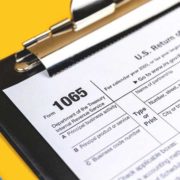IRS Launches Paperless Filing Initiative
It’s no secret that even mentioning the IRS can instantly conjure out images of paper piles and processing. However, in a bold move, the IRS recently announced its decision to shift toward paperless filing for nearly all IRS correspondence starting in 2024 — with the goal of having all paperless tax processing by the year 2025.
The Benefits of Filing for Taxes Using a Paperless System
After the pandemic, the IRS received increased funding as part of the Inflation Reduction Act, making it possible for the IRS to invest in a revamped technology push. Some of the predicted benefits of a new, digitized process include:
Increased Efficiency and Speed
Paperless tax filing eliminates the need for physical documents and manual processing. Taxpayers can submit their information electronically, which accelerates the entire filing process. This results in faster refunds and quicker resolution of any issues.
Reduced Environmental Impact
Going paperless reduces the consumption of paper, ink, and other resources used in traditional paper-based filing. This eco-friendly approach contributes to conservation efforts, lowers carbon footprint, and supports sustainability initiatives.
More Reliable Results
Automating the process can reduce the risk often associated with manual errors. This could potentially lead to more accurate tax returns and even decrease the chance for audits or corrections due to mistakes.
Streamlined Efforts
The new process means, well, less tedious paperwork, giving the IRS the ability and bandwidth to devote their efforts to other areas like customer service.
Put simply, moving to an online process should create a faster, more convenient way for people to file taxes and create a more user-friendly experience from start to finish.
Potential Drawbacks of Filing Taxes Using a Paperless System
Of course, no system is perfect. Mistakes and unexpected events can happen when launching a new system — and people definitely have opinions about the possible downside of a paperless filing system. No technology is foolproof, and many critics are saying that the IRS is putting all of their eggs in one proverbial basket. One specific potential drawback could be the risk of investing time, energy, money, and resources into this technology, only to have it crash or become disrupted in some way. With filing deadlines approaching during the busy tax season, any unforeseen blips could create a major problem.
Filing With Paper Taxes Will Still Be an Option For Taxpayers
The good news? For those struggling to imagine a paperless IRS, paper filling will still be an option. To achieve paperless processing, the IRS will convert all paper returns into digital form upon arrival. However, for the rest of us, the agency is hoping that the move will offer taxpayers an easier, more efficient way to file every year.










